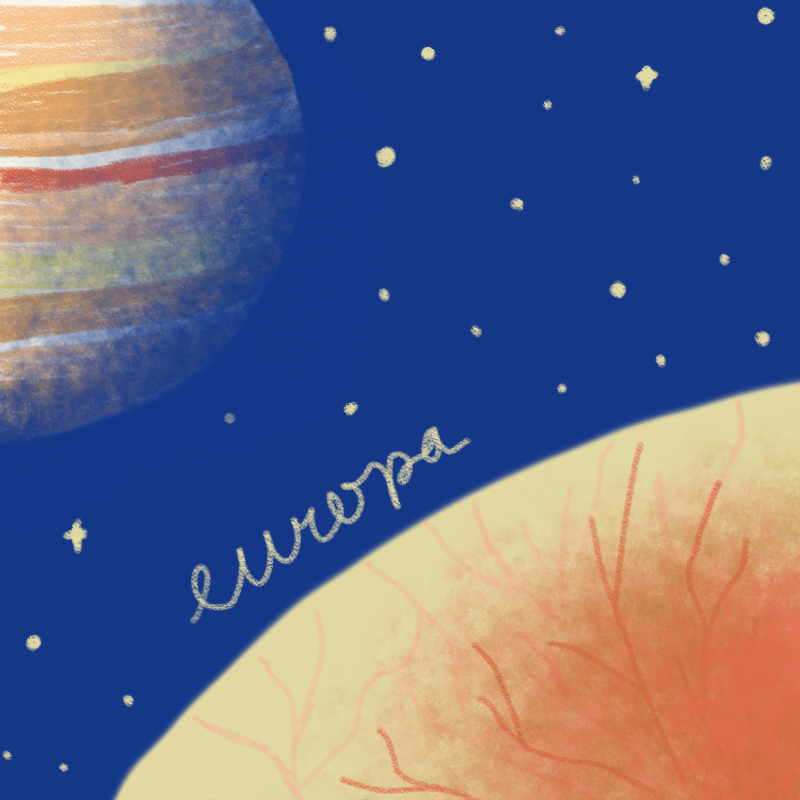UT-Austin research into Antarctic ice provides insights into Jupiter’s moon Europa
September 8, 2022
A new study from UT researchers analyzed categories of ice found in Antarctica in order to make predictions for the makeup of Jupiter’s moon Europa’s icy shell.
Published in Astrobiology at NASA, the study looked into a type of ice called accreted ice, which is ice that maintains traces of the sea that it forms from. Accreted ice falls under two categories: congelation ice and frazil ice, said lead author Natalie Wolfenbarger.
Congelation ice forms in a single direction as the water cools, similarly to ice formed in a household freezer, Wolfenbarger said. Frazil ice forms in a more unique way. When turbulent water from supercooled regions of the ocean starts to freeze, the forming ice crystals rise to the bottom of the ice shell. This “underwater snow” is usually more pure and less salty than the ocean it forms from.
“The impurity concentration going into the ice based on the ocean freezing process is heterogeneous (a non-uniform mixture), which means that we’re going to have saltier ice and less salty ice, and it has big implications for how that ice moves around in ice shell,” said Donald Blankenship, a senior research scientist at the Institute for Geophysics.
Researchers needed accurate predictions of the makeup of Europa’s ice shell to prepare the radar instrument on the Europa Clipper spacecraft. Blankenship, the principal investigator for Europa Clipper’s radar instrument, said differences in the salt concentration of the ice will help the tool locate water underneath the shell of Europa.
Using habitats on Earth to make predictions about distant environments in space has multiple benefits, said Wolfenbarger. Researchers can test valuable equipment before it is sent into space, and can gain more immediate insights into the underlying processes they are investigating.
“When we study physical processes, physics doesn’t really change,” Wolfenbarger said. “When you go from Earth to another world, some of the conditions may change, but these laws are the same.”
Krista Soderlund, a research scientist for the Institute for Geophysics, said although there are limited ways to learn about the environments of other planets while on Earth, similar physical environments can offer a valuable research tool.
“Having these models that (Wolfenbarger) has put together to have inferences of how the salt content might be expected in the ice shell, and then how that might vary spatially, will be a really powerful tool to be able to interpret the radar data that we will get from Europa Clipper in a way that we weren’t quite able to do before,” Soderlund said.
Wolfenbarger said learning about the ways the types of ice combine in the ice shell can also provide opportunities for different habitats, which is an emerging area of interest in studying Europa. Blankenship said (Jupiter’s) neighboring moon Io’s frequent volcanic activity showers Europa with oxidants that could hold the key to creating a habitable environment.
“There’s not a lot of sun for Europa, but, good Lord, is that chemical energy potential huge,” Blankenship said. “If that were Earth, there would be life there, and it would be reasonably complex life if the energy contrast is enough.”









